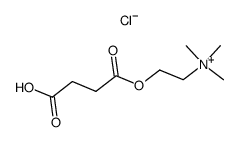Applicability of succinylmonocholine as a marker for succinylcholine administration--comparative analysis of samples from a fatal succinylcholine-intoxication versus postmortem control specimens.
Uta Kuepper, Frank Musshoff, Burkhard Madea
文献索引:Forensic Sci. Int. 207(1-3) , 84-90, (2011)
全文:HTML全文
摘要
Doubts concerning the applicability of succinylmonocholine (SMC) as a succinylcholine (SUX) marker have been issued. A comparative analysis of previously discussed tissues, i.e. brain, liver and kidney, was conducted to further elucidate this question by searching for diagnostically useful differences in analyte content in samples of SUX- versus non-SUX-associated fatalities. Furthermore, possible advantages of vitreous humor as a novel and promising target matrix for SUX analytics were assessed. Sample material of SUX-negative controls as well as the fatal SUX-intoxication was derived from frozen archive material and current autopsies. Samples were analyzed according to a modified protocol of a previously published and validated method employing ion-pairing solid-phase extraction and subsequent HPLC-MS/MS analysis. Standard addition was employed for quantification as well as an estimation of the analytical limits of the method. In all tested matrices, the method was proven to be sufficiently sensitive for the intended application. No indication of native SMC was found in controls of fresh tissues, nor in fresh or frozen vitreous humor. However, most of the samples were found to be positive for a previously reported interference with SMC's main ion transition, thereby falsely suggesting an SMC content of up to 139 ng/g, 126 ng/g, 165 ng/g and 93 ng/ml in brain, liver, kidney and vitreous humor, respectively. Contrasting the results for fresh sample material, SMC was detectable in some of the initially non-putrefied liver samples after long-term storage, as well as in massively decomposed SUX-negative control bodies. In this context, a microbial origin of the analyte may be assumed. All tissues as well as the vitreous humor of the fatal SUX-intoxication were negative for SUX and SMC. Just like serum, tissue and vitreous humor samples therefore do not allow a reliable diagnosis of a SUX-intoxication: in tissues this is due to the pronounced instability of both target analytes in these esterase-containing matrices, for vitreous humor an additional reason could be their insufficient incorporation into this medium.Copyright © 2010 Elsevier Ireland Ltd. All rights reserved.
相关化合物
| 结构式 | 名称/CAS号 | 分子式 | 全部文献 |
|---|---|---|---|
 |
2-((3-羧基丙酰基)氧基)-N,N,N-三甲基乙胺氯化物
CAS:5297-17-6 |
C9H18ClNO4 |
|
Chronotropic effects of succinylcholine and succinylmonochol...
1982-10-01 [Anesthesiology 57(4) , 289-92, (1982)] |
|
A fully validated isotope dilution HPLC-MS/MS method for the...
2008-10-01 [J. Mass Spectrom. 43(10) , 1344-52, (2008)] |
|
Succinylmonocholine analytics as an example for selectivity ...
2008-06-01 [Rapid Commun. Mass Spectrom. 22(12) , 1965-70, (2008)] |
|
Pharmacokinetic properties of succinylmonocholine in surgica...
2011-06-01 [J. Anal. Toxicol. 35(5) , 302-11, (2011)] |
|
Degradation and elimination of succinylcholine and succinylm...
2012-03-01 [Int. J. Legal Med. 126(2) , 259-69, (2012)] |